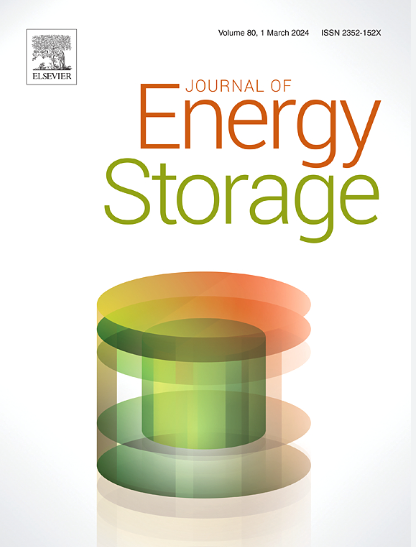Performance analysis of integrated battery and cabin thermal management system in Electric Vehicles for discharge under drive cycle
IF 8.9
2区 工程技术
Q1 ENERGY & FUELS
引用次数: 0
Abstract
An integrated thermal management system developed by integrating a battery thermal management system and vehicle cabin air conditioning system is a potential method for enhancing energy efficiency and minimizing the space requirement in Electric Vehicles. This study presents an innovative thermal management system focusing on crucial factors such as battery safety, passenger comfort, and overall system economy. There has been very little research on the study of a collaborative, integrated thermal management system incorporating both thermal management of battery packs and cabin air conditioning systems simultaneously. This study overcomes the previous limitations by investigating the performance of an integrated thermal management system for Electric Vehicles under Indian Drive Cycle. The simulations are carried out in MATLAB/Simulink, and the performance of the integrated system is studied at different ambient temperatures (25 °C, 30 °C, 35 °C, 40 °C) and relative humidity levels (60 %, 70 %, 80 %, 90 %, and 100 %). The variation of battery pack temperatures, vehicle cabin temperature, and maximum power demand by the integrated thermal management system are investigated in this study. The model is formulated in such a way that the integrated system tries to maintain the cabin temperature in the range of 22–24 °C and battery pack temperature in the safe range of 30–35 °C. From the results, it is observed that with an increase in ambient temperature, the time required by the integrated system to achieve the desired cabin temperature in the vehicle cabin is longer due to higher heat exchange between the vehicle cabin and the ambient environment at higher ambient temperatures. At 25 °C ambient temperature, the time taken by the cabin air conditioning system to achieve the desired cabin temperature is 625 s, whereas at 30 °C and 35 °C, the corresponding values are 2045 and 2150 s, respectively. The battery thermal management system, being more crucial, gives an excellent performance by maintaining the battery pack temperature in the desired range of 30–35 °C at all ambient temperatures. The results indicate that with an increase in ambient temperature, the maximum power demand by the integrated thermal management system increases from 1.69 kW at 25 °C to 6.9 kW at 40 °C. The results also indicate that with an increase in the relative humidity levels, the maximum power demand increases from 2.9 kW at 60 % relative humidity to 5.9 kW at 100 % relative humidity at 30 °C ambient temperature.
求助全文
约1分钟内获得全文
求助全文
来源期刊

Journal of energy storage
Energy-Renewable Energy, Sustainability and the Environment
CiteScore
11.80
自引率
24.50%
发文量
2262
审稿时长
69 days
期刊介绍:
Journal of energy storage focusses on all aspects of energy storage, in particular systems integration, electric grid integration, modelling and analysis, novel energy storage technologies, sizing and management strategies, business models for operation of storage systems and energy storage developments worldwide.
 求助内容:
求助内容: 应助结果提醒方式:
应助结果提醒方式:


